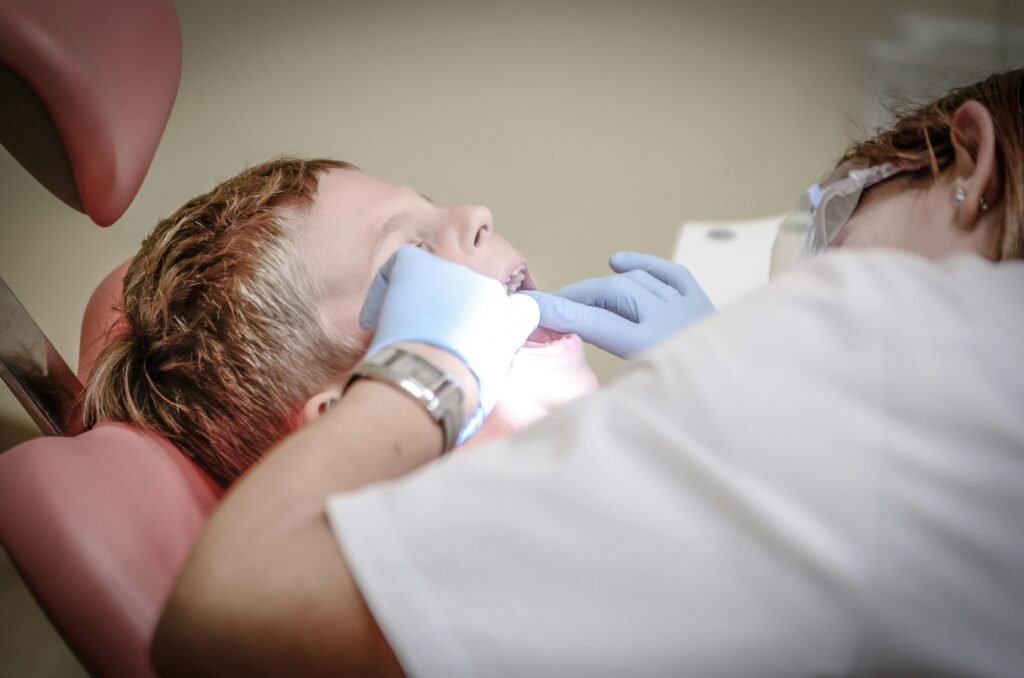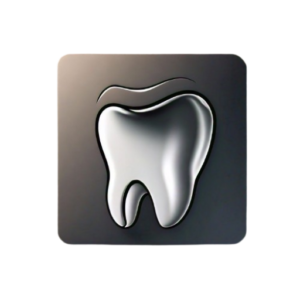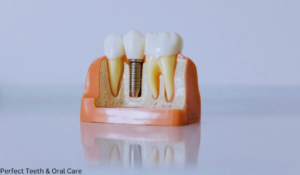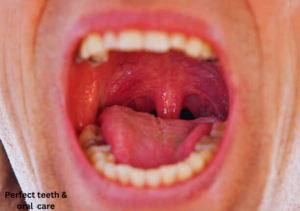Pain in the roof of your mouth, also known as the palate, can be a concerning experience that affects your daily life. This part of the oral cavity plays a key role in speaking, eating, and overall well-being. While occasional soreness might be harmless, persistent pain could indicate something more serious. If the pain worsens or becomes severe, it’s important to consult with a dentist promptly.
Sometimes, the reasons for pain are not harmful—such as irritation from hot foods or minor injuries caused by sharp edges of food. However, in some cases, it may signal an underlying issue. For example, infections, burns, or even oral cancer can lead to discomfort in the roof of the mouth. Pain in this area can also be linked to conditions such as sinus infections or nutritional deficiencies. If the pain interferes with your ability to eat, speak, or enjoy daily activities, it is best to address the problem with care.

Common Causes of Pain in the Roof of the Mouth
1. Muscular Cramps
Muscular cramps in the roof of your mouth, also known as the palate, can cause sudden and sharp discomfort. This often happens when the muscles in this sensitive area experience strain, which may be linked to dehydration or an electrolyte imbalance. When a cramp occurs, it can feel alarming, but it’s typically temporary, often due to stress or fatigue. Ensuring proper hydration and maintaining balanced electrolytes can help prevent these cramps and reduce the discomfort.
2. Mouth Burns
One of the most common reasons the roof of your mouth feels tender is due to burns. The palate is highly sensitive and can easily be injured by hot or spicy foods. A common occurrence of this is called “pizza palate,” which happens when you bite into a hot pizza slice. Similarly, sipping on freshly boiled coffee or other piping hot beverages can burn the roof of your mouth.
While most burns on the roof of the mouth heal on their own within a few days, the healing process can be painful. Cooling the mouth with cold water or gently sucking on ice cubes can soothe discomfort. Severe burns, however, might take longer to heal and should be assessed by a medical professional if pain persists or difficulty swallowing occurs.
3. Canker Sores
Canker sores (aphthous ulcers) are shallow, painful lesions that can develop on the soft tissues of the mouth, including the palate, tongue, gums, and the insides of the cheeks. They usually appear as yellow or white marks with a red border, causing a burning or tingling sensation before fully forming. While most people experience just one at a time, canker sores can be triggered by stress, certain foods, medications, hormonal changes, or injury to the mouth.
Although canker sores typically heal within 7-10 days, they can sometimes last longer. If a canker sore persists beyond two weeks, worsens, or is unusually painful, it is a good idea to seek medical attention to rule out any other underlying issues.
4. Oral Cancer
Oral cancer can cause pain in the roof of your mouth, though it is relatively rare compared to other conditions. Persistent, unexplained pain in the roof of your mouth, along with sores, lumps, or noticeable changes in the appearance of oral tissues, could be an early sign of oral cancer. Unlike canker sores, oral cancer lesions often do not heal within a few weeks and may be painless initially. While it is less common, the risk is higher for individuals who smoke, use alcohol excessively, or have HPV infections. Early detection improves treatment outcomes. If you notice any unusual symptoms such as persistent sores, lumps, or changes in the color or texture of the palate, it’s important to consult a healthcare professional for a thorough evaluation.
5. Cold Sores
Cold sores, caused by the herpes simplex virus (HSV-1), are commonly found around the lips but can occasionally appear inside the mouth, including on the roof of the mouth. They often begin with a tingling or itchy sensation, followed by the appearance of fluid-filled blisters. Cold sores generally heal on their own within 7-10 days, but antiviral treatments can help speed up the healing process. Triggers for cold sores include stress and illness, and they are highly contagious.
6. Torus Palatinus
Torus palatinus is a harmless bony growth that can develop on the roof of the mouth. This condition is typically present from a young age but may not become noticeable until later in life. In most cases, it doesn’t cause pain unless it is irritated by trauma, such as eating hard foods. If it becomes bothersome, it may require treatment, but in many cases, no treatment is necessary unless it interferes with speech, eating, or denture fitting.
7. Dry Mouth
Dry mouth (xerostomia) occurs when there is insufficient moisture in the mouth, often due to dehydration or salivary gland dysfunction. This can lead to irritation and sensitivity in the roof of the mouth. Dry mouth can also be caused by medications, smoking, or certain health conditions. If you experience dry mouth regularly, it is important to stay hydrated and consult with a healthcare provider for proper management.
8. Electrolyte Imbalance
An electrolyte imbalance can lead to general dehydration and dry mouth, which may cause discomfort in the roof of the mouth. Severe dehydration or electrolyte imbalances can affect salivation, causing the tissues in the mouth to become dry and irritated. If you’re feeling dehydrated, increasing your fluid intake can help. If the imbalance or symptoms persist, it’s important to seek medical attention for proper diagnosis and treatment.
9. Mucoceles
Mucoceles are saliva-filled cysts that can form when a salivary gland becomes blocked. These cysts can be painful but usually resolve on their own. However, if they become infected or grow larger, they may require medical attention.
10. Gingivostomatitis
Gingivostomatitis is an inflammation of the gums and mouth, often caused by viral infections like the herpes simplex virus type 1 (HSV-1). Symptoms can include painful sores on the roof of the mouth, fever, and swollen gums. It can cause significant discomfort, and antiviral medications may be necessary to treat the infection.
11. Palatal Cysts
Palatal cysts are benign, fluid-filled sacs that develop in the soft tissues of the roof of the mouth. They are usually asymptomatic, but if they become infected or inflamed, they may cause discomfort. In rare cases, surgical removal may be necessary.
Treatments: Effective Ways to Relieve Pain and Promote Healing
When the roof of your mouth hurts due to various causes, treatments can help relieve discomfort and speed up healing. Depending on the condition, treatments may include:
- Pain relievers like NSAIDs (ibuprofen, Advil) to reduce inflammation and soreness.
- Medications for cold sores, such as Abreva, to speed up healing.
- Medicated mouthwash and oral gels to soothe the affected area.
- Steroids (prescription) for more severe inflammation.
- Antifungal medications, such as fluconazole (Diflucan), for conditions like oral thrush.
- Electrosurgery or laser therapy to remove painful growths or cysts.
Home Remedies to Ease Roof-of-the-Mouth Pain
Here are a few simple home remedies to help ease discomfort:
- Rinse your mouth with warm saltwater (about one teaspoon of salt in a cup of water) to soothe irritation.
- Apply ice chips or a piece of ice to the affected area for pain relief.
- Drink plenty of fluids, such as water or water-rich foods like melons, to stay hydrated.
- Avoid spicy, salty, or acidic foods that may further irritate the roof of the mouth.
- Eat soft foods and chew gently to avoid further irritation.
- Maintain good oral hygiene to prevent infections.
When to See a Doctor
If you’re experiencing pain on the roof of your mouth, you should consult a doctor if:
- The pain is severe, persistent, or worsening.
- You notice swelling, pus, or other signs of infection.
- You notice bleeding or trauma to the mouth.
- Sores or pain increase in size or spread.
- You have difficulty breathing or swallowing.
- Over-the-counter treatments aren’t effective.
FAQs
Why does the upper roof of my mouth hurt?
Infections, whether viral or bacterial, such as streptococcal sore throat, tonsillitis, sinusitis, the common cold, and other types of illnesses, can lead to pain in the roof of your mouth. This discomfort may result from sinus pressure pressing against the palate or bacterial growth causing irritation to the surrounding tissue.
How do you fix the roof of your mouth that hurts?
Home remedies like saltwater rinses and cold compresses can help alleviate discomfort, while over-the-counter treatments provide targeted relief for pain and inflammation. However, if symptoms persist or worsen, it is crucial to seek professional medical advice.
Why is the roof of my mouth sore but not sick?
Mouth ulcers are small sores that can develop on the gums, lips, tongue, inner cheeks, or the roof of the mouth. They can be triggered by various factors, such as minor injuries, hormonal changes, or emotional stress. While many mouth ulcers heal on their own, some may need treatment.
What deficiency causes a sore roof of the mouth?
A deficiency in essential nutrients, such as vitamin B12 or zinc, can result in oral health problems, including soreness on the roof of the mouth. These nutrients play a vital role in maintaining a healthy mouth lining, and their absence may lead to discomfort and pain.


